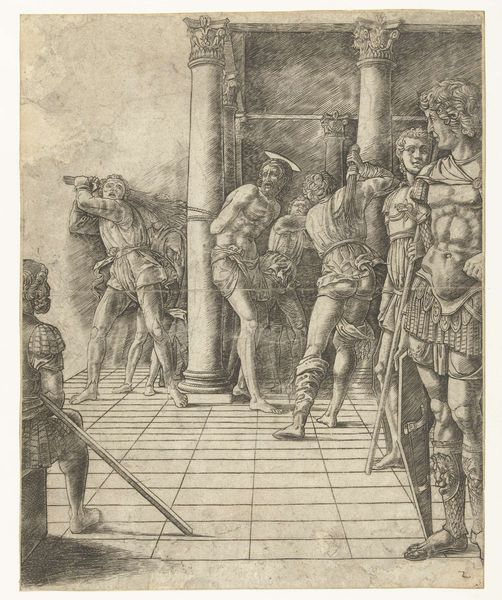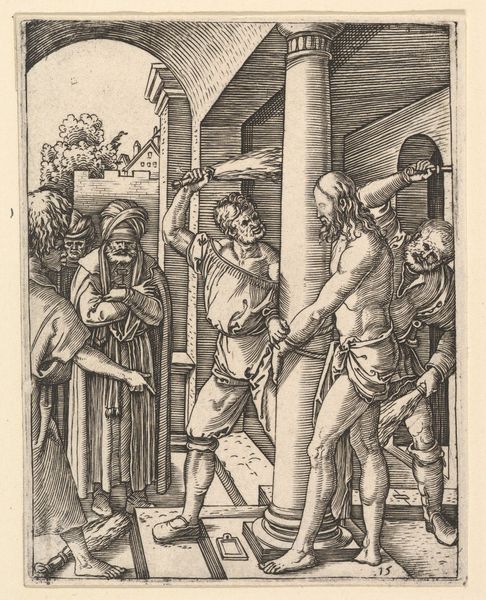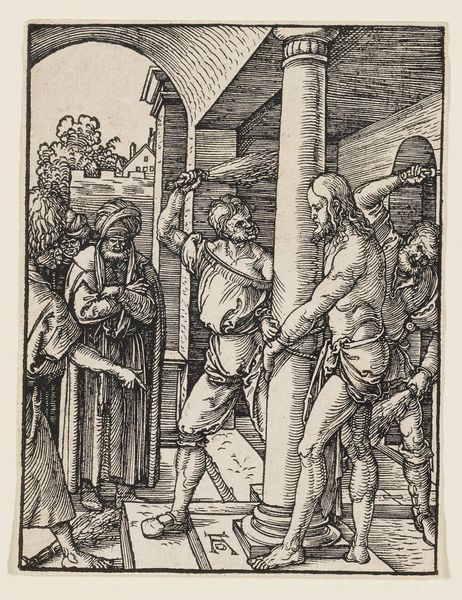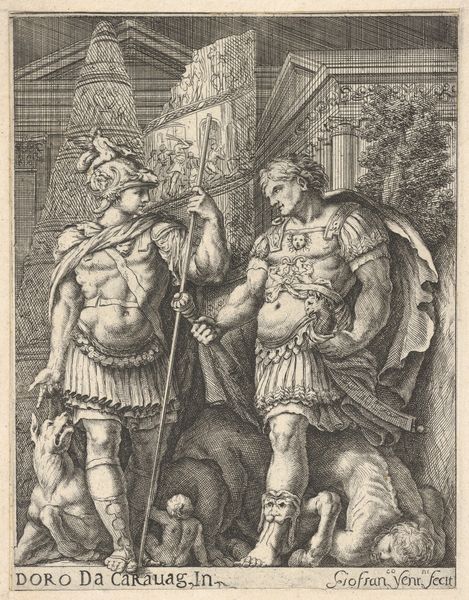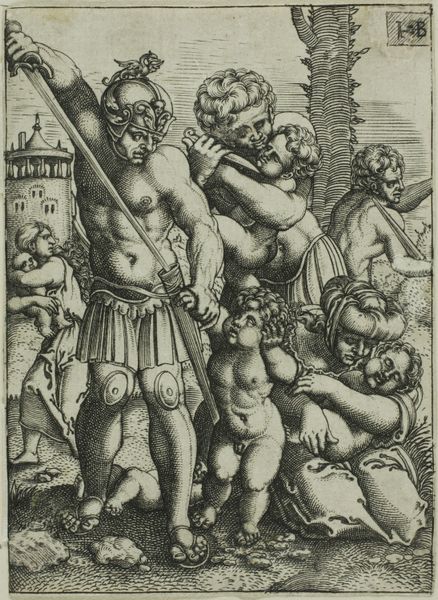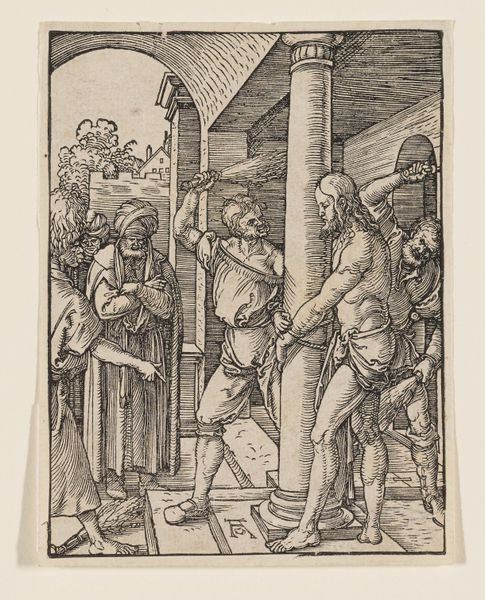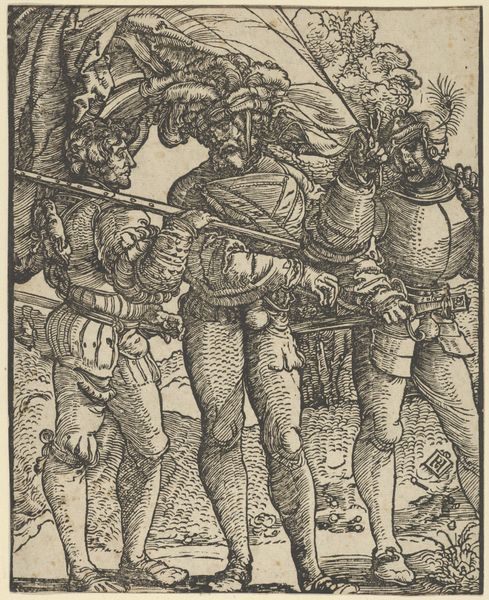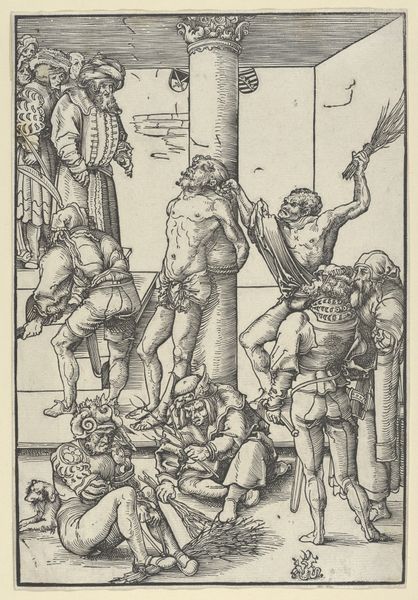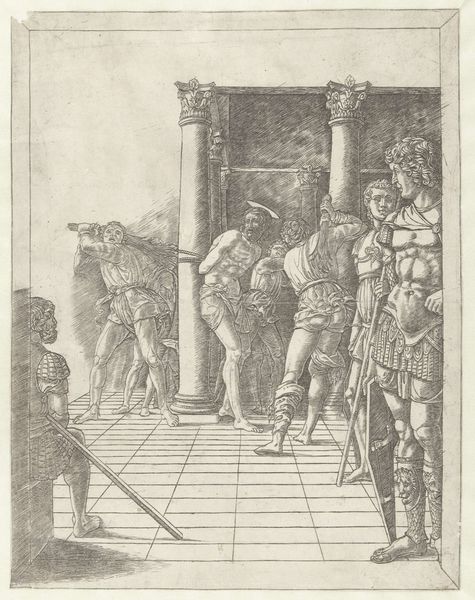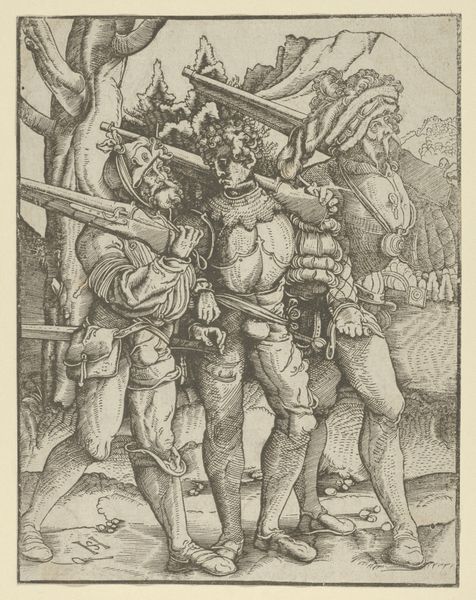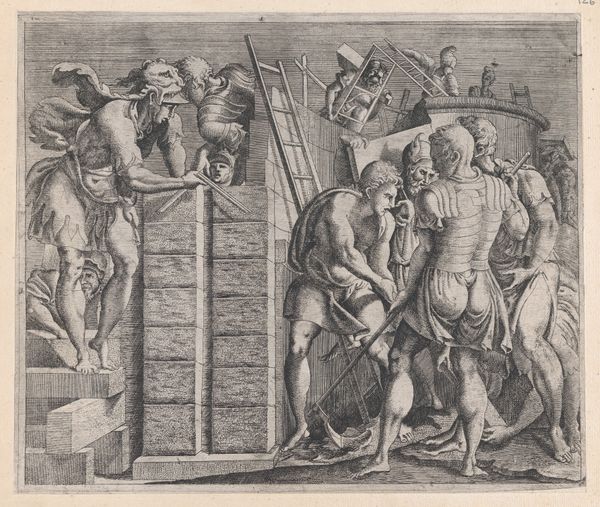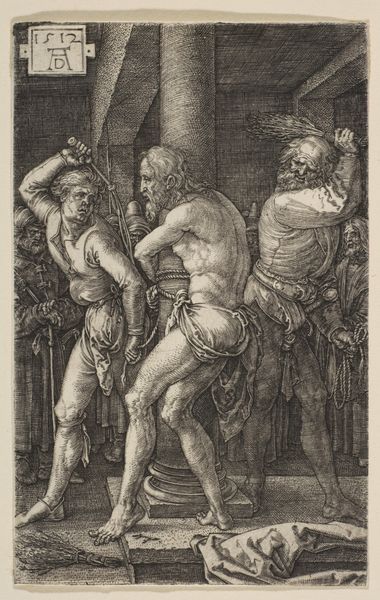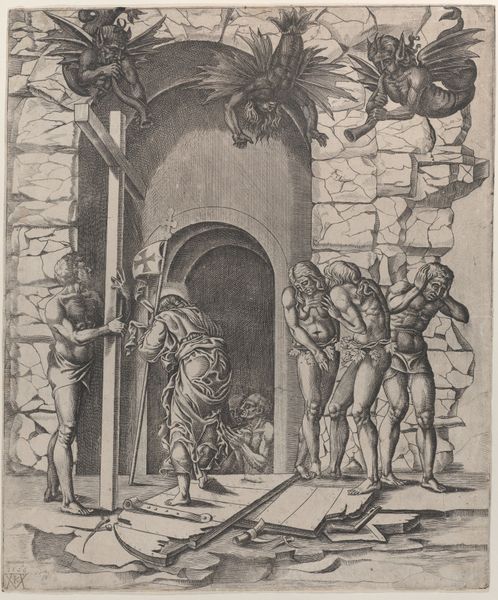
The Flagellation of Christ, with the Landscape Background 1475 - 1480
0:00
0:00
drawing, print, paper, engraving
#
drawing
# print
#
landscape
#
figuration
#
paper
#
history-painting
#
italian-renaissance
#
italy
#
engraving
Dimensions: 391 × 282 mm
Copyright: Public Domain
This engraving of The Flagellation of Christ was made by Andrea Mantegna, an Italian artist working in the late 15th century. It's printed in ink on paper, using the process of engraving: lines are incised into a metal plate, which is then inked and pressed onto the page. The most striking thing is the absolute clarity of line. This wasn't just a way to make an image, it was a means of circulating them, making them accessible to a wider audience than paintings on panel or fresco. The making of prints was hard work, and it's easy to see how the precise lines are reflective of the labor that was involved. Consider the wider social context: the advent of printmaking coincided with the rise of a merchant class and new forms of capitalism. The labor involved in creating prints speaks to the changing nature of work and the commodification of images. Understanding the material, the making and the context helps us to understand its full meaning, and challenges traditional distinctions between fine art and craft.
Comments
No comments
Be the first to comment and join the conversation on the ultimate creative platform.
